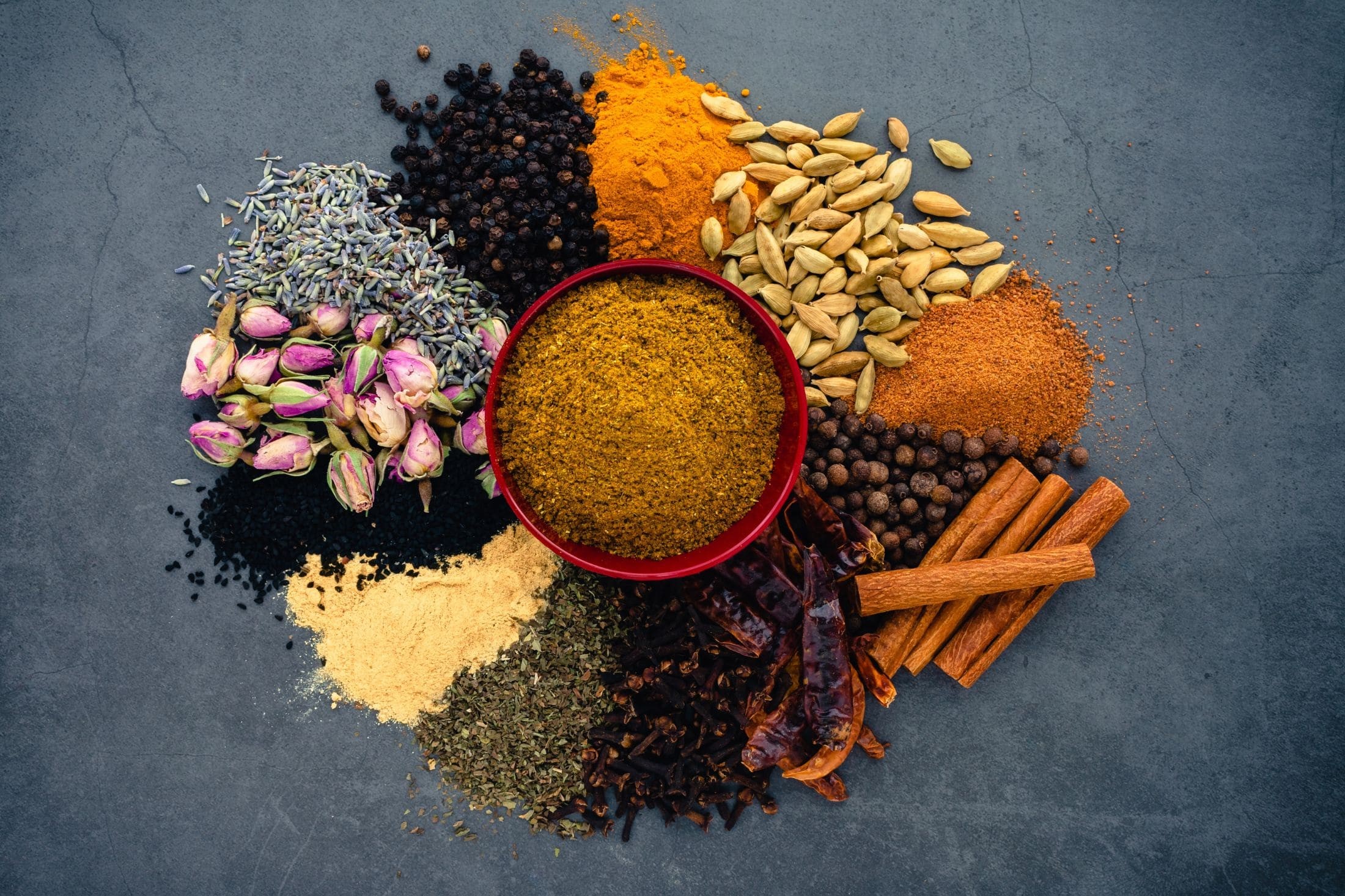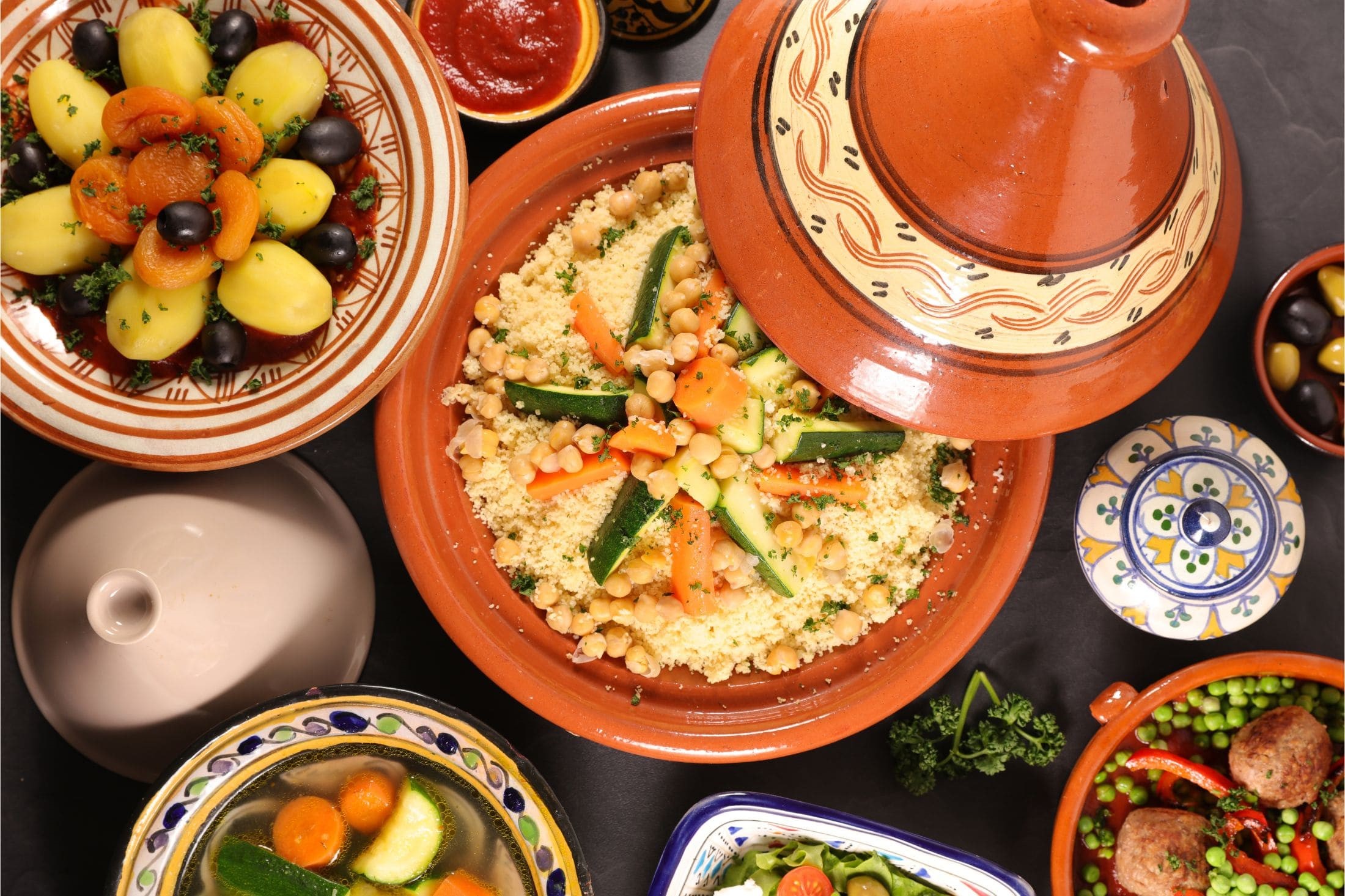Moroccan cuisine, a vibrant tapestry of flavors, colors, and aromas, stands as a testament to Morocco’s rich cultural heritage and the diverse influences that have shaped its history. Central to this culinary tradition are Moroccan spices, a blend of ingredients that are much more than mere seasonings. They are the essence of Moroccan cooking, transforming simple ingredients into extraordinary dishes that captivate the senses. This blog dives deep into the world of Moroccan spices, exploring the essential spices that make Moroccan cuisine uniquely enchanting.
The Aromatic World of Moroccan Spices

Moroccan Spices - The Essence of Moroccan Cooking
Moroccan spices are pivotal in crafting the flavors that define Moroccan cuisine. These spices, however, are not used indiscriminately for heat or color; they are artfully blended to create a symphony of flavors that is distinctly Moroccan. From the bustling markets in Marrakech to the serene alleyways of Rabat, the Moroccan spice market is a colorful showcase of the country’s culinary soul. Vendors proudly display a myriad of spices, from the bright yellows of turmeric to the deep reds of paprika, each spice adding its own voice to the Moroccan flavor chorus.
Key Moroccan Spices
To truly understand Moroccan cuisine, one must familiarize themselves with its core spices, each contributing its unique flavor and aroma:
- Cumin: This earthy, slightly bitter spice is a cornerstone of Moroccan cooking, used in everything from tagines and soups to salads and spice blends.
- Coriander: Offering a hint of citrus, coriander seeds add a fresh, vibrant note to Moroccan dishes, balancing the richer flavors with its lightness.
- Paprika: Providing warmth without overpowering heat, paprika is used for its sweet, smoky flavor and its ability to add rich color to dishes.
- Turmeric: Beyond its health benefits, turmeric offers a beautiful golden hue and a mild, earthy flavor to Moroccan stews and rice dishes.
- Cinnamon: Unlike its common use in Western sweets, cinnamon in Morocco finds its way into savory dishes, adding a subtle sweetness and warmth.
- Ginger: Fresh or dried, ginger brings a spicy zest and freshness, essential in marinades and spice mixes.
- Saffron: The most luxurious of spices, saffron is revered for its unique flavor and ability to impart a rich golden color, used sparingly but significantly in special dishes.

Moroccan Spices Blend: Ras El Hanout
The crown jewel among Moroccan spice blends is Ras El Hanout, a complex and aromatic mixture that can contain anywhere from ten to a hundred different spices. The composition of Ras El Hanout varies significantly from one spice merchant to another, each blend being a closely guarded secret that reflects the individual’s taste and tradition. Ingredients can include ground flowers, exotic barks, and rare spices, making each Ras El Hanout a unique flavor adventure. This blend is not just a seasoning but an embodiment of the Moroccan spice market’s depth and diversity, offering a glimpse into the country’s rich culinary heritage.

Exploring the Moroccan Spice Market
The Moroccan spice market, or souk, is a sensory overload in the best possible way. It’s a place where the air is filled with a heady mix of aromas, from the sharp tang of preserved lemons to the sweet scent of cinnamon. These markets are the beating heart of Moroccan culinary life, offering not just spices but a view into the social and cultural fabric of Morocco.
Navigating the Market
Venturing into a Moroccan spice market is an experience unlike any other. Each stall is laden with bags and jars filled with spices of all colors and textures. The market is a bustling, lively place where locals and visitors alike come to stock up on essentials and discover new flavors. It’s also an opportunity to engage with vendors, who can offer invaluable advice on how to use these spices to create authentic Moroccan dishes.

Buying Spices in Morocco
When purchasing spices in Morocco, freshness is key. The vibrancy of a spice’s color and the potency of its aroma are good indicators of its quality. Fresh spices will elevate your cooking, bringing a taste of Morocco into your kitchen. Buyers are encouraged to purchase small amounts, as the flavor of spices diminishes over time. This ensures that your spice cabinet is always stocked with the most aromatic and flavorful selections.
Moroccan Spices at Home
Bringing Moroccan flavors into your home cooking is a journey of exploration. Start with classic dishes like tagines and couscous, experimenting with different spice combinations to find what speaks to you. Moroccan cuisine is as much about the process as it is about the result, encouraging cooks to taste as they go, adjusting spices to achieve the perfect balance.

Conclusion
Moroccan spices are more than just ingredients; they are a bridge to Morocco’s soul, offering insight into its history, culture, and traditions. The rich, complex flavors of Moroccan cuisine are a testament to the power of these spices, which transform simple ingredients into dishes that are deeply satisfying and memorable. Whether you’re navigating the bustling lanes of a Moroccan spice market or experimenting with these flavors in your own kitchen, Moroccan spices invite you on a culinary adventure that is as enriching as it is delicious.
